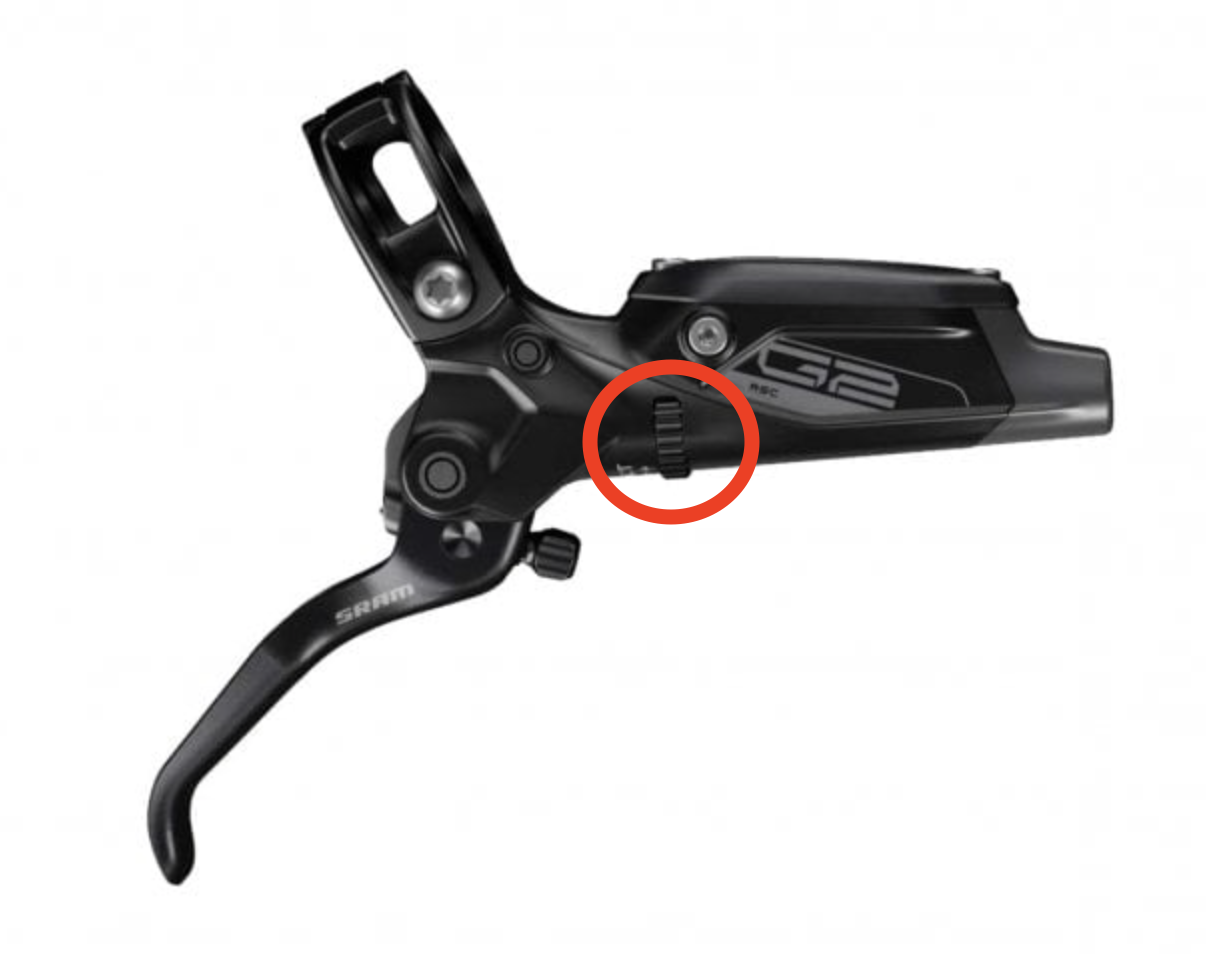https://www.instagram.com/p/CDXd8YtHMcm/
See it on Instagram

tools, technology, work
https://www.instagram.com/p/CDXd8YtHMcm/
See it on Instagram
Best small seat bag I’ve tried. Robust, well made, easy to attach and easy to get into.


SRAM’s G2 RSC brakes have two adjusters – one that sets the distance between the bar and the lever, and Contact Point Adjustment that sets where the brakes bite as you pull the lever (circled in red).
This wheel has a habit of jamming – particularly if it’s all the way open or all the way closed.
If your wheel jams, a five step solution may work for you.
If it doesn’t want to move, don’t force it. Add more oil and wait some more. Anecdotal suggestions include bleeding the brakes – which is never a bad thing to do anyway. It helps if you understand which way you want to turn the wheel (mine was stuck in the closed position).
After you bleed SRAM brakes you should clean the lever to make sure you don’t have any DOT fluid on them. If you use a chemical cleaner, make sure that it doesn’t get into the Contact Point adjuster, as it will help the wheel jam.
https://www.instagram.com/p/CDM6orund1I/
See it on Instagram
https://www.instagram.com/p/CDM6bEoHmyt/
See it on Instagram
https://www.instagram.com/p/CDCIp_8HPM5/
See it on Instagram
Importing files and posts into WordPress is sometimes a bit of a black art – there are lots of places where things might go wrong. Changing the upload_url_path value for your site might cause problems with WP export files – here’s how to fix it.
Cross-posted from edinburghwp.com
Removing auto-generated WordPress thumbnail images
WordPress themes can generate a wide range of thumbnail sizes – and it’s not obvious how to delete sizes you don’t use anymore. If you can mount your upload folder on your Desktop, you can easily select and delete all the thumbnails WordPress has generated using the right tools. This post tells you how to do this on a Mac.
Cross-posted from edinburghwp.com
https://www.instagram.com/p/CC0uHnsHLPz/
See it on Instagram
https://www.instagram.com/p/CCyBe2vnXuq/
See it on Instagram
https://www.instagram.com/p/CCx9xuUnUeC/
See it on Instagram
Many cities are using Covid-19 as the reason for significant shifts in their attitudes towards cycling – and particularly towards making roads significantly more cycle friendly.
But the evidence on the street is that this shift to urban cycling hasn’t really happened yet.
https://www.instagram.com/p/CCmD5JjHMGU/
See it on Instagram
https://www.instagram.com/p/CCgwT78H1ds/
See it on Instagram

When I started to build my new bike I thought the answer to this was yes – I watched all the youTube videos and I was sold.
But I couldn’t get one for a reasonable price…

So I tried to do without. And you know what? I found out that I didn’t need one after all. And you might not either.
The challenge is actually pretty straightforward: can you reach the cable cutouts in your frame if your fork is removed?
If you can, then you don’t need an internal cable guide.

If you can reach the cable cutouts by your head tube with your fingers, then you don’t need tools to guide your cables/hoses.
Make sure you feed your cables from the back of the bike to the front of the bike – which is what you have to do with your rear brake and internal dropper cables anyway – and you should be able to relatively easily pull your cables through the frame.